 Beatrice Loayza
Beatrice Loayza
For Ninón Sevilla, star of the Golden Age of Mexican cinema, dazzling dance moves also laid bare the soul.
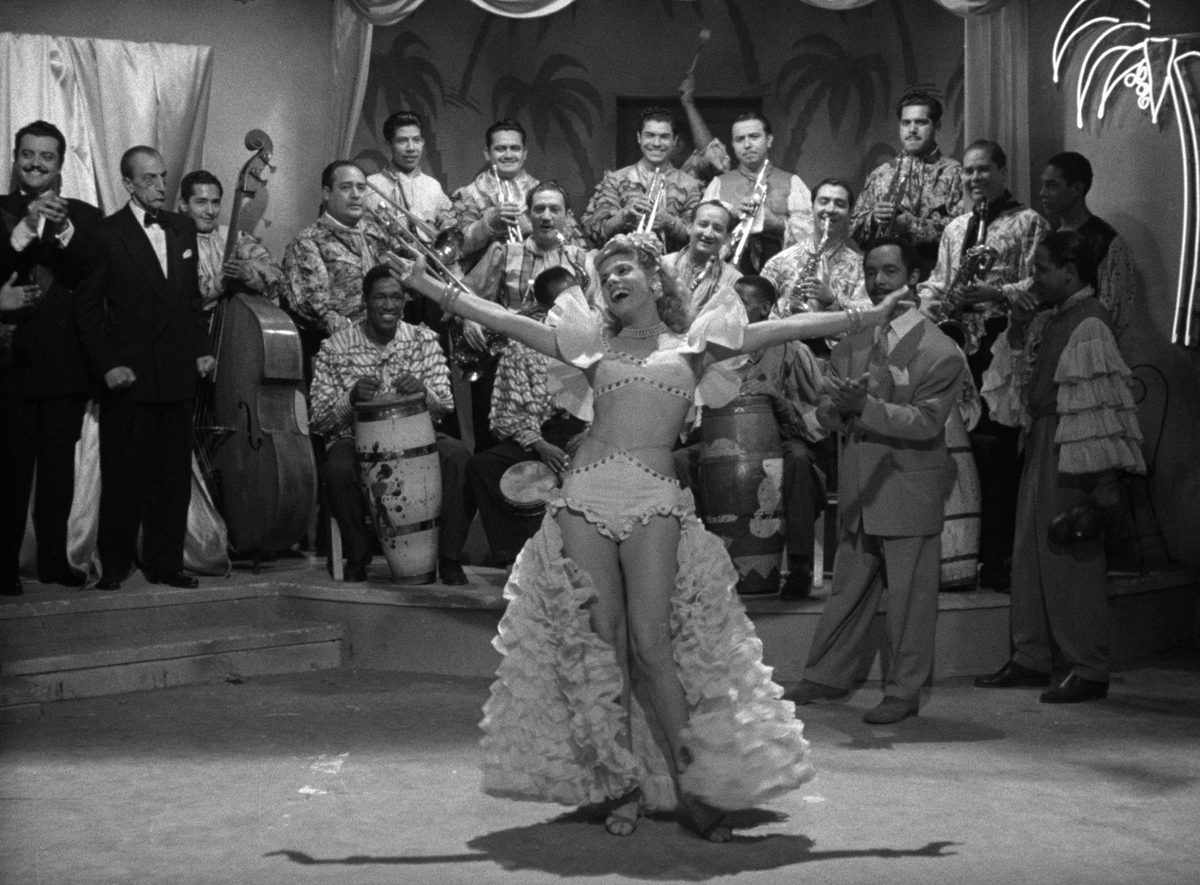
Ninón Sevilla as Violeta in Victims of Sin. Courtesy Film Forum.
Victims of Sin, directed by Emilio Fernández, Film Forum, 209 West Houston Street, New York City, playing through October 12, 2023
• • •
Ninón Sevilla—the queen of the rumberas in the Golden Age of Mexican cinema—grew up wanting to be a nun. It’s a funny detail, given her sultry reputation. “From her inflamed look to her fiery mouth, everything is heightened in Ninón,” wrote an awestruck twenty-two-year-old François Truffaut in a 1954 issue of Cahiers du cinéma. “Her forehead, her lashes, her nose, her upper lip, her throat, her voice”—her every molecule, apparently, exuded a preternatural force of attraction. Consider her signature move. Seemingly possessed by the percussive rhythms of an Afro-Cuban ensemble, Ninón would collapse to the ground. Legs folded, her torso facing skyward, she’d bounce like a springboard while jiggling her arms, running her hands over her waist, her breasts, as if offering herself up to the gods.
At the height of her silver-screen career, from the mid-’40s through 1959, Sevilla played sex workers, showgirls, fallen women. Such ladies were the protagonists of choice for the postwar genre known as the cabaretera film—urban crime–inflected melodramas set in nightclubs that flaunted Busby Berkeley–style song-and-dance numbers and soap-opera levels of plot twisting. A Cuban export, Sevilla arrived in Mexico City during a time of intense modernization; American culture, ever a vehicle of corruption, had ensnared a new cohort of upper-middle-class elites, wresting control from an old-money echelon still beholden to conservative ethical and sexual codes. Afro-Caribbean musical forms seeped into the clubs, essentially yassifying the night-on-the-town experience with sexy bangers that beckoned suggestive new forms of dance: rhumbas, congas, mambos. Sevilla excelled at them all.
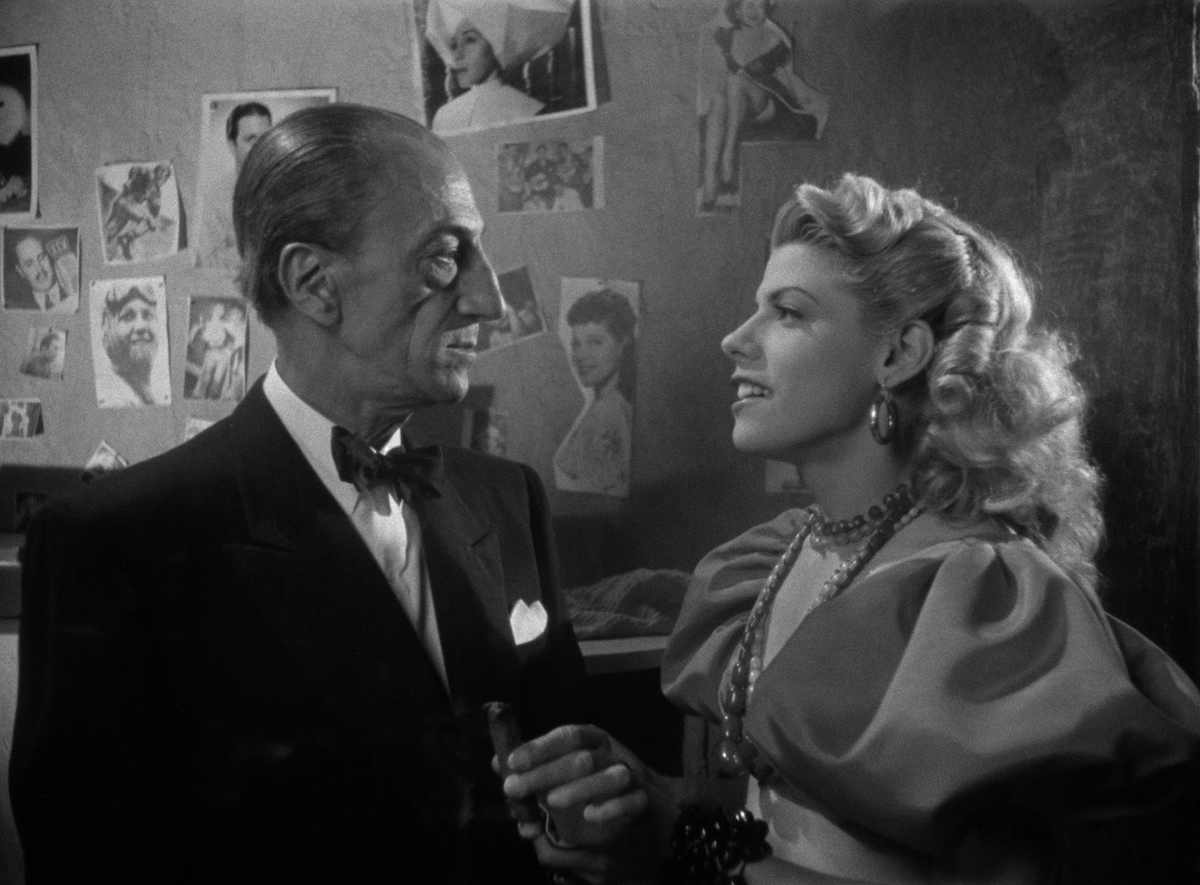
Francisco Reiguera as Don Gonzalo and Ninón Sevilla as Violeta in Victims of Sin. Courtesy Film Forum.
If the title Víctimas del pecado, or “Victims of Sin,” sounds theatrically moralistic, it wasn’t uncharacteristic of the genre: Sevilla starred in such bluntly named cabareteras as Pecadora (The Sinning Woman), Coqueta (The Flirtatious Girl), and Mujeres sacrificadas (Sacrificed Women), the latter directed by Alberto Gout, her frequent collaborator. Gout and the Spanish screenwriter Álvaro Custodio were tasked with making Sevilla a star by Cinematográfica Calderón SA, the production company that had arranged her papers and paid for her airfare. The team succeeded, with 1950’s Aventurera (The Adventuress)—a sordid tale of adultery, suicide, rape, forced prostitution, and revenge—considered Sevilla’s chef d’oeuvre.
Víctimas del pecado (1951), the performer’s most acclaimed work outside the Gout-Custodio alliance, also bears a distinguished pedigree. Behind the camera was Emilio Fernández, who had started his film career in the Hollywood backlots, serving—among other odd jobs—as Douglas Fairbanks’s stunt double, before returning to his native Mexico and directing rural dramas in the ’40s, then urban ones in the ’50s. The standard-bearer for Mexican cinema’s golden years, he won a Palme d’Or for his revolution-era romance María Candelaria in 1946. Víctimas was shot by Gabriel Figueroa, Fernández’s regular DP, who also worked with Luis Buñuel on the movies he made during his years in Mexico, beginning with Los Olvidados (1950).
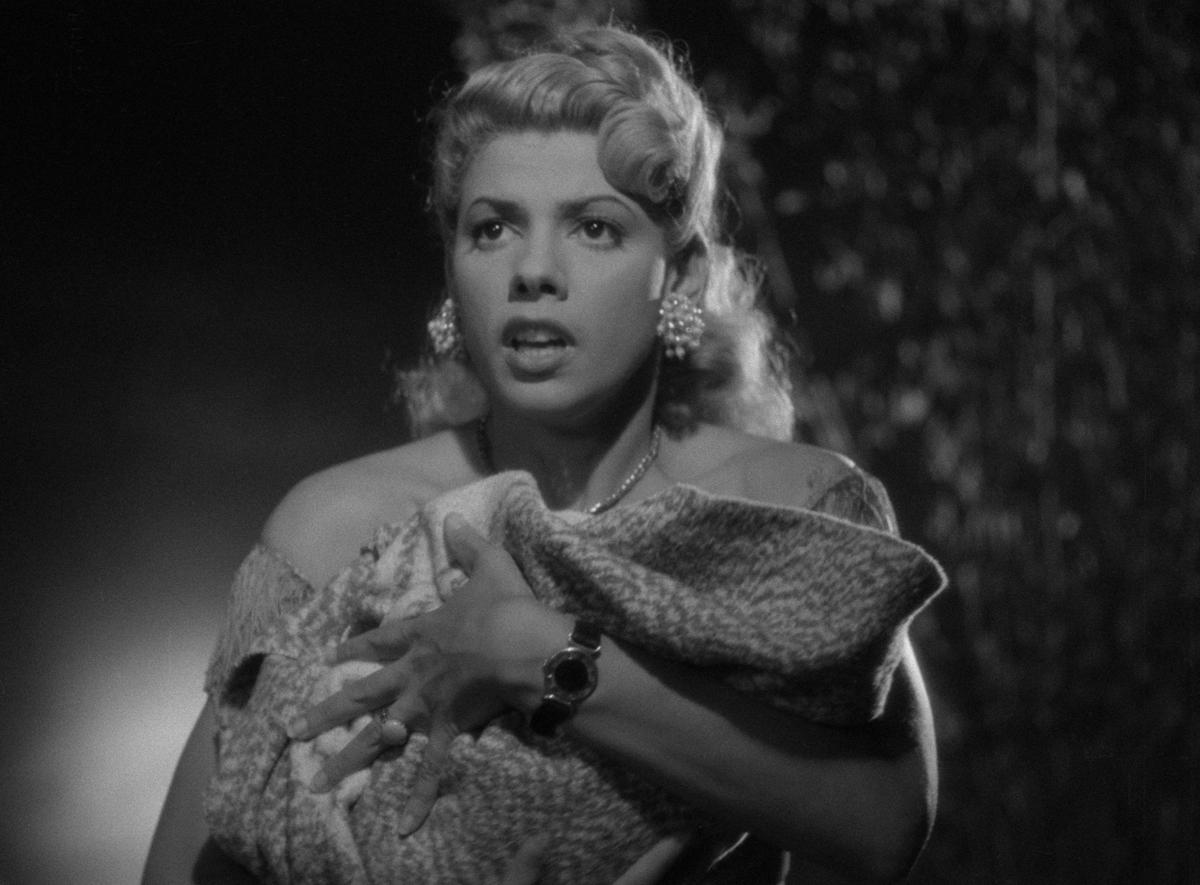
Ninón Sevilla as Violeta in Victims of Sin. Courtesy Film Forum.
In Víctimas del pecado, Fernández and Figueroa exalt the star, capturing Sevilla in trembling close-ups and framing her, as if at the center of the universe, in both bustling two-story roadhouses and melancholic avenues cloaked in angular, noirish shadows. To say that Sevilla is the beating heart of the film might seem cliché, but in this case it’s justified, not least for the palpable strength that pulses from her screen presence, the hypnotics of her cha-cha. Sevilla, as Violeta, a nightclub headliner turned streetwalker, also seems to be the only person with a soul. When a coworker discards her newborn in a trash can, it’s Violeta who saves the infant, essentially adopting him as her own with the kind of outstanding moral commitment that dismisses all practical considerations, if not reason itself. The baby’s odious father, a zoot-suited, jitterbugging pimp named Rodolfo (Rodolfo Acosta), triggers a tragic domino effect that results in the club’s closure, forcing Violeta to turn to sex work. It’s not the scarlet women or the racy parties with shimmying chorines who corrupt the foundations of urban Mexican life; it’s the good-for-nothing machistas like Rodolfo who renege on their familial duties.
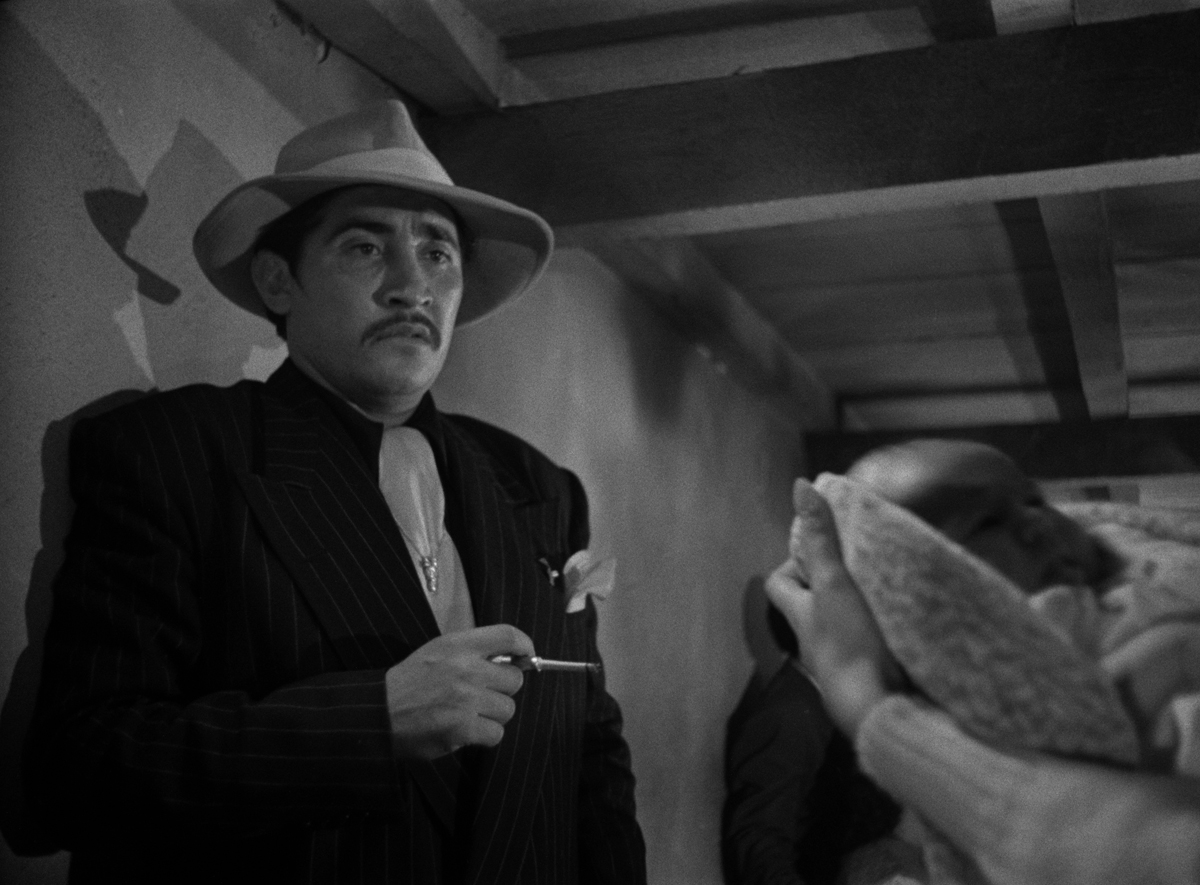
Rodolfo Acosta as Rodolfo in Victims of Sin. Courtesy Film Forum.
Counter to this crook is the power of the female collective, with Violeta as that amorphous aggregate’s unofficial ringleader. She crowdfunds within her group of gal pals for her hapless colleague’s new-baby expenses, and later, when Rodolfo assaults her, her screams shoot out like a bat signal, beckoning a mob of brawling B-girls to her rescue. Another foil to Rodolfo: Santiago (Tito Junco), a pillar of Mexican traditionalism who roams the streets trailed by a mariachi band. In the mood for a quickie, he singles out Violeta—the sole blonde—among the other ladies of the night. Modeling what some might call nontoxic masculinity, Santiago, upon discovering Violeta’s baby—and, what’s more, finding out that she cares for him out of the goodness of her heart (no figure was revered more in Mexican society than the selfless mother)—offers her money, a room, and a gig at his club.
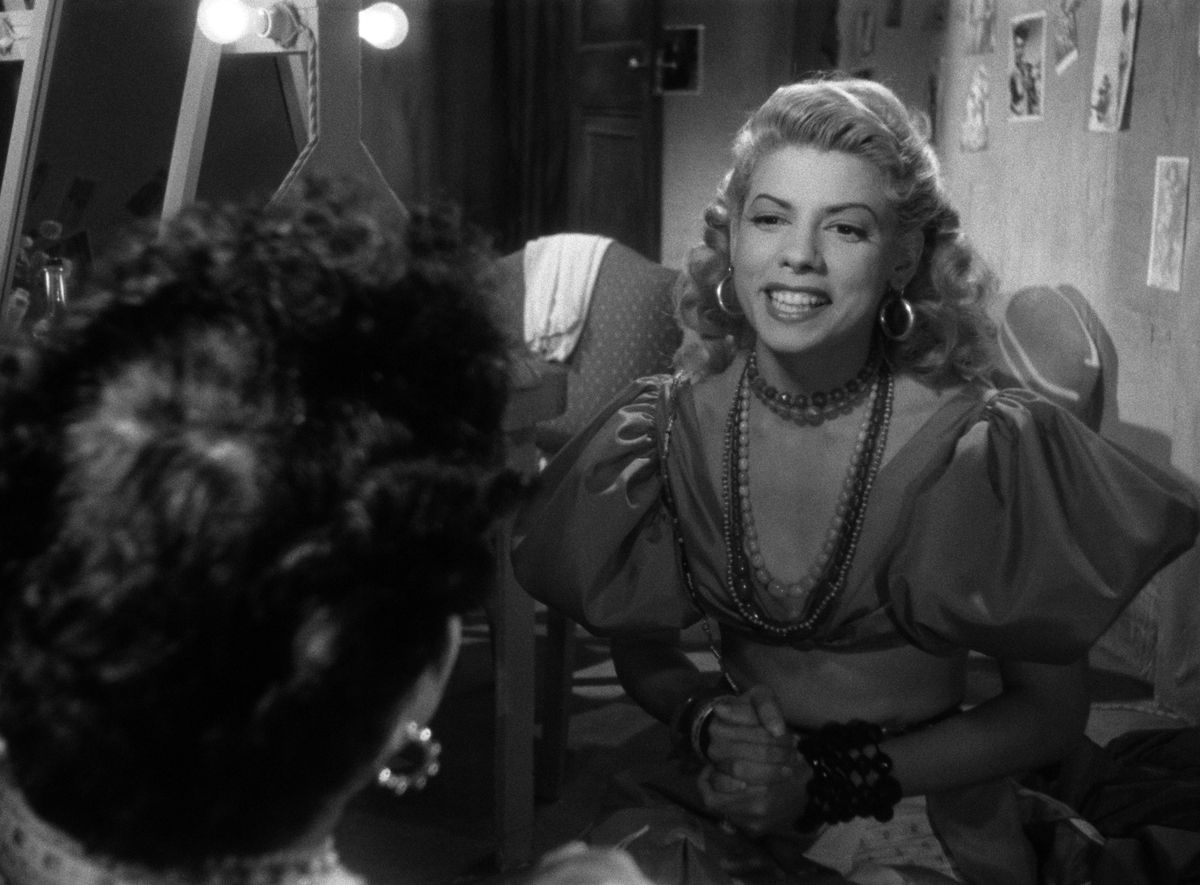
Ninón Sevilla as Violeta in Victims of Sin. Courtesy Film Forum.
As with those of Dolores del Río and María Félix, two other estrellas of Golden Age Mexican cinema, appraisals of Sevilla by Western critics tended to exoticize her. Her dancing, according to Positif critic Raymond Borde, is exceptional for going “so far in the simulation of the sex act.” This salacious impression echoed the idea that non-Western women from tropical climates were more in touch with their animal instincts, thus their untamed sexualities. Sevilla, unlike those actresses mentioned above, never went to Hollywood, though she was offered an MGM contract that she ultimately rejected.
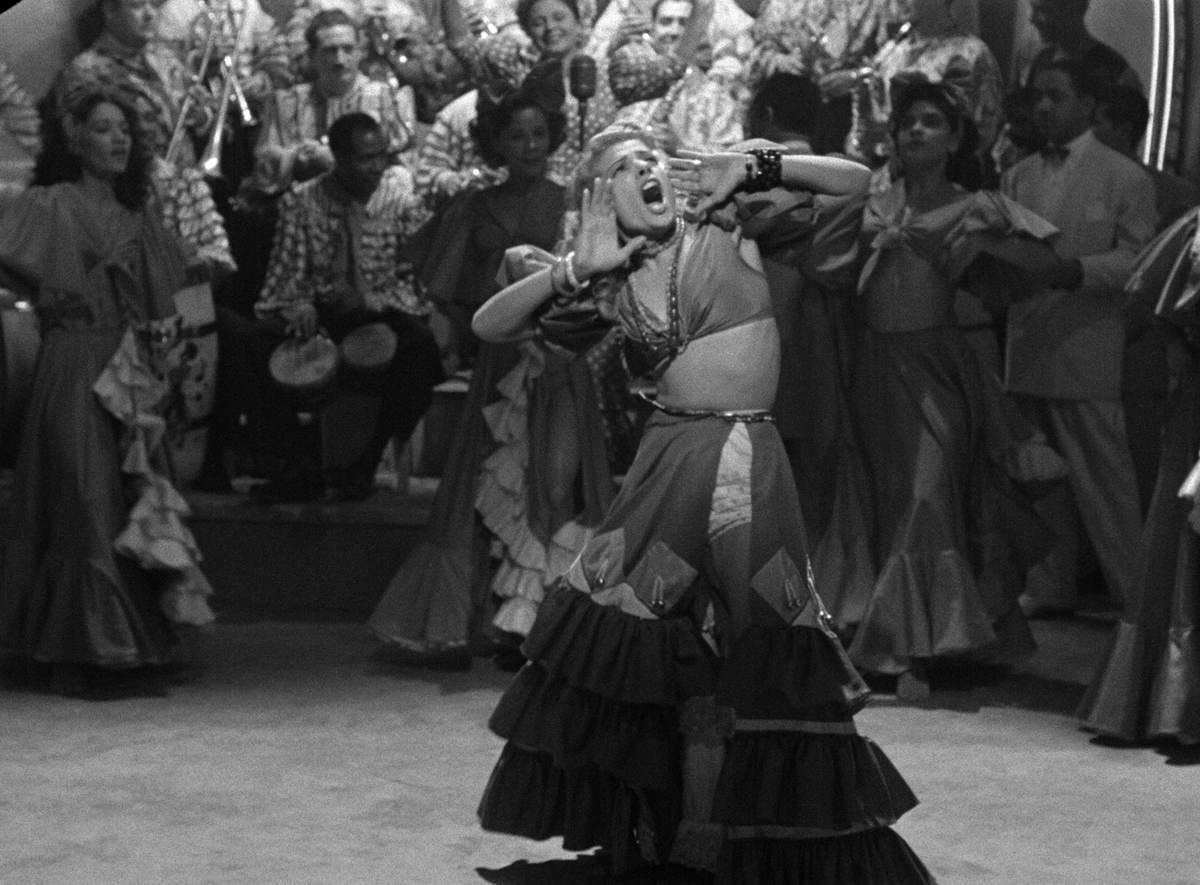
Ninón Sevilla as Violeta in Victims of Sin. Courtesy Film Forum.
Titillating as Sevilla was when she hit the dance floor, I’m not sure her skills communicated merely a transcendental kind of sex. Her movements exposed the inequities of the world around her, the trifles of the many weak and corrupt in her midst, and reconciled the division between one’s raw physicality and the nobler will to integrity and justice. Another of Sevilla’s trademarks was her slap—first, a few furious blows to the birth mother of her adopted child, then to Rodolfo, whom she straddles with her legs, fixing him in place as she strikes him. When set to trumpets and timbales, her dance moves function as dynamic vehicles of drama themselves. After Rodolfo is released from prison, he faces off with Santiago while Violeta is in the middle of her act. Suddenly her joyous gyrations tense up; her once radiant expression is darkened by portent. She’s trapped in the motions of performance while the love of her life is gunned to death. In the film’s last act, Violeta is imprisoned for killing Rodolfo, her child now an orphan forced to fend for himself and await his mamacita’s release. Their reunion marks the film’s happy ending, but we viewers know there’s more to come: unshackled, Violeta will dance again.
Beatrice Loayza is a writer and editor who contributes regularly to the New York Times, the Criterion Collection, Artforum, Film Comment, Cinema Scope, the Nation, and other publications.